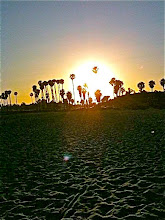Wells starts out the article talking about the difference between orthodox animation and experimental animation; giving the reader his definitions of the two. The words and phrases that he uses to describe orthodox animation include the following: configuration, specific continuity, narrative form, evolution of context, unity of style, absence of artist, and dynamics of dialogue. In contract, experimental animation is defined as abstraction, specific non-continuity, interpretive form, evolution of materiality, multiple styles, presence of the artist, and dynamics of musicality. This is the basis for Wells article as he goes on to define each of these terms in depth.
In my opinion one of the main differences that I see is the narrative vs. interpretive forms. The narrative form of animations were usually filled with character conflicts and chase sequences. All in all, narrative animation is really just the idea of establishing a story by coming up with a situation, coming up with a problem and then solving it. This narrative form is a characteristic of orthodox animation. In contrast, experimental animation is based on an interpretive form. This interpretive form is based on aesthetic and non-narrative. It seems to avoid storytelling and instead works towards getting its point across in a way that is more similar to that of artists like painters and sculptors. It can also be described as animated paintings. I think that this difference totally makes sense in explaining the differences in orthodox and experimental because when I think of experimental, I think of the absence of a defined narrative story line; the ability to tell a story in a completely different way and the opportunity for everyone to get their own idea and story out of a film.
Another thing that stuck out to me when reading the essay was the idea of unity of style for orthodox and multiple styles for experimental animation. Wells talks about the unity of style as formal properties that tend to remain consistent. On the other hand, in experimental, multiple styles of animation are mixed together. Multiple new effects can also be used in experimental style.
Orthodox animation is just a much more structured form of animation. Experimental animation, like any experimental films, provide much more freedom to the filmmaker.

No comments:
Post a Comment